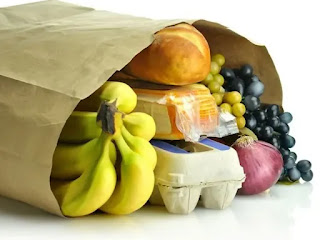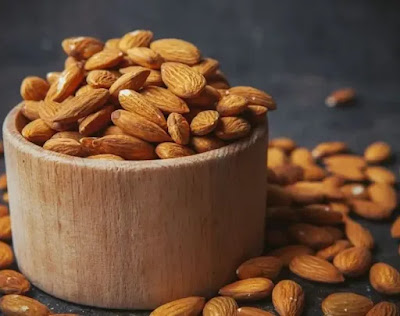Eating on a budget tips
Eating on a budget tips/Ways to be Wise about Saving
The best practice that is often achieved in conjunction with limited income is maintaining a healthy diet, and it is quite possible to purchase tasty and healthy food while being on a budget. Below is a list of some of the crucial tips that will enable you to eat while on a budget, yet enjoy healthy, tasty, and quality food.
1. Plan Your Meals
The key strategies reflect that spending less does not have to mean consuming less; the overarching concept is meal planning. To begin with it is prudent to design weekly meal plan with the foods to be taken for breakfast, lunch, dinner and snacks. This assists you in eliminating a tendency to buy things that are not essential and also assists to fashion out ways to use the ingredients fully. It is wise that you prepare your meal plan in advance and create a shopping list especially for those items you intend to use in preparing your meals. This avoids spending on what is not required as well as reducing on the amounts of food that may go bad due to spoilt stocks.
2. Cook at Home
Home preparation of food is in most cases more economical than any other of the quick service foods or even any convenience food. I recommend spending slightly more on items that are fundamental to the kitchen such as a good knife, cutting board as well as a few good quality pots and pans. Home cooking also imply the possibility to choose appropriate portions and to cook with appropriate ingredients, which means a healthy nutrition.
3. Embrace Batch Cooking
Catering on the other hand is the preparation of a large amount of food all at one time and serving it at different times. This method is fast and efficient also cost effective. Cook meats once or twice a week and use the meat in cooking meals like soup, stew, and casserole and dividing into little portions and put them in Ziploc bags and freeze. In this way, you have easy, prepared meals which are cheaper than ordering food from a fast-food restaurant.
4. Incorporate fresh produce that are available seasonally and in the region
Local and seasonal items are also usually cheaper and contain less preservatives and additives than out-of-season and imported goods. When buying fruits and vegetables, go for the seasons’ produce and they can be easily bought from farmers or in nearby grocery stores. Introduce these ingredients into meals and enjoy purchasing them because they are cheaper.
5. This is mainly done by shopping for the products with the intention of using the product specific coupon codes available with the sale
Search for the best deals around including sales, discount and coupons. Most of the stores have a loyalty card where customers can make more would-be savings for this is a wise way of running a business. Thus, incorporate these deals with your meals to get the most out of your money. Accompany these deals with the combination of your meal plan to make the utmost of the deal. But do not be tempted to purchase products that are cheaper especially when they are part of the sale, if they are not on your list, because this is a sure way to overspend.
6. Buy in Bulk
The fresh fruits, vegetables, and meats can be bought in the stores, however, the packing of grains, pasta, beans and spices costs less money. Purchasing in large quantities makes one to get it for a lesser price and keeps the important stocks in the kitchen. The only issues regarding this food are the conditions of storage that are to be obeyed in order to avoid spoiling or preservative wasting.
7. Choose Budget-Friendly Proteins
Dietary protein can actually be one of the most costly macronutrients of a meal but this has affordable choices. Protein’s such as beans, lentils and eggs can easily be purchased and are flexible to be incorporated in a multitude of meals. Canned tunas and chicken are also good because they can also be bought in affordable prices if in large quantities. If some of these are incorporated into meals they will drastically reduce expenses.
8. Reduce Meat Consumption
Proteins have been widely recognized to contribute a large proportion in meal plans and this can considerably be aggravated by the consumption of meats. Suggesting that one should consume less meats, try to have more meals that are vegetarian. One tends to get full on dishes like stir-fries, salads, pasta, and so on while minimum use of meat is required. This not only cuts the expenses but is also good for our health at times as most of us are informed.
9. Make Use of Leftovers
Avoid wastage of big meals in the refrigerator through the day. Ensure you organize your meals in such a way that some of them can be utilized in preparing other meals. For instance, roast chicken can be employed to prepare sandwich or salads or even in some form of soup. This helps in the reduction of wastage and also saves your cash through moderation in the use of food.
10. How to Start Your Own Herbs and Vegetables at Home
With proper space, one should try growing his or her own herbs and vegetables. Places where one may not even be able to place a chair is enough for pots containing herbs such as basil, cilantro or parsley. Organic farming can be used to cut expenses of buying food in the supermarkets as well as ensure fresh food is available at home.
11. The fourth tip of portion control tells individuals to be conscious of how big their portions are
portion control ensures that the amount of food consumed is under check and portions that are not finishes can be served on the next occasion Food wastes are also curbed. Make use of lesser plates and bowls when serving to ensure that people do not take more food than they require. This can also assist to further ingredients and make meals economic hence stretching the limited fortunes in the kitchen.
12. Frozen and canned goods should be used
Fresh vegetables and fruits are expensive while the frozen and canned counterpart may almost be as healthy at times cheaper. The students also have a longer shelf life, which also discourages wastage and are readily available unlike the packaged foods. Integrate them into your meals to your benefit since they are relatively cheaper than the rest.
13. Prepare Simple Recipes
The costly and time-consuming process of cooking food prepared from many and many ingredients is also tiresome. In its place, turn to home cooking based on the principle of the fewer ingredients, the better. The basic foods which are rice, pastas, beans can be accompanied by vegetables and economical sources of protein.
14. Store Food Properly
Storing foods in the right manner increases the shelf life of the groceries and helps one avoid cases of food wastage. Make significant investments into getting high-quality sealable containers and ensure you get the most out of proper cooling and freezing of food. It helps the food to remain fresh and free from the germ that causes food poisoning thus improving on the quality of the food.
15. Stay Organized
Try to have a proper inventory of the pantry and fridge for you to tell what you still have. This assists in minimizing the purchase of items which are similar to others, and motivates one to utilize what is available. Always note the use-by date of each product and use the oldest products earliest to avoid spoilage.
In applying these tips, the client is able to maintain diverse and proper nutritional value of foods whilst balancing according to his or her budget. Proper planning, more specifically strategic purchasing and proper cooking can make cheap and affordable healthy eating possible and easily achievable.




Comments